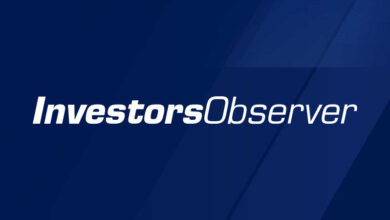Best Free CRM in 2024

Developing a rapport with leads and customers fuels business growth. But, managing connections across multiple touchpoints is time-consuming and often expensive. A customer relationship management (CRM) system ensures that your sales and marketing efforts deliver a return. With the best free CRM, your teams can track leads, personalize campaigns and automate workflows.
We evaluated over 50 CRMs and identified the top seven offering free relationship management tools. Our team spent over 30 hours speaking with vendor representatives and reviewing user feedback. We assessed each CRM on ease of use, features and scalability. Explore our results to find the right solution for your company.
Featured CRM software offers
Best free CRM
- HubSpot: Best free CRM for integrations.
- Bitrix24: Most flexible for sales and marketing management.
- Agile CRM: Top-rated customer engagement tools.
- Freshsales: Excellent free CRM with calling features.
- Zoho CRM: Best for automating workflows.
- EngageBay: Outstanding live chat capabilities.
- Insightly: Ideal for freelancers and solopreneurs.
Why trust our small business experts
Our team of experts evaluates hundreds of business products and analyzes thousands of data points to help you find the best product for your situation. We use a data-driven methodology to determine each rating. Advertisers do not influence our editorial content. You can read more about our methodology below.
- 51 companies reviewed.
- 106 products reviewed.
- 5,312 data points analyzed.
Featured CRM software offers
Best free CRM comparison
We extensively research the key competitors within an industry to determine the best products and services for your business. Our experts identify the factors that matter most to business owners, including pricing, features and customer support, to ensure that our recommendations offer well-rounded products that will meet the needs of various small businesses.
We collect extensive data to narrow our best list to reputable, easy-to-use products with stand-out features at a reasonable price point. And we look at user reviews to ensure that business owners like you are satisfied with our top picks’ services. We use the same rubric to assess companies within a particular space so you can confidently follow our blueprint to the best free customer relationship management (CRM) software.
The best free CRM software has positive user reviews on customer review sites and app stores. Applicant tracking system companies should provide customers with fast and reliable support. Using a combination of phone support, live chat and knowledge bases, customers should be able to quickly resolve issues 24/7.
Free CRM software should include a pipeline management dashboard, analytic and reporting tools and integration with third-party automation applications and systems in its free plans. It should have a customizable dashboard, a document management library and an open API and developer library.
Free CRM software should also integrate with mobile or VoIP systems, support multiple currencies for international businesses, support international formatting for telephone numbers and addresses and allow all contact data to be exported.
What is a free CRM and how does it work?
A free CRM (customer relationship management) is a software application with no upfront or ongoing costs. It provides a central repository for lead and client information, allowing businesses to track the complete customer lifecycle. Most free systems also have sales, marketing and service tools.
CRM platforms store contact data and keep profiles updated with information from one or more channels, including:
- Employee manual data entry.
- Social media networks.
- Company websites and landing pages.
- Live chat, phone, video and text interactions.
- Customer surveys.
- Email and messaging services.
- E-commerce and point-of-sale (POS) systems.
Other features and functions vary by vendor. However, most platforms enable sales and marketing tasks. Free CRMs work by using profile data to segment email lists, score leads and more.
Benefits of a free CRM
Companies that effectively monitor, organize and manage data have a clear advantage over competitors. Indeed, the best CRM software leverages information, from client details to marketing analytics, helping businesses form (and nurture) relationships with potential buyers and current customers.
The benefits of a free CRM include:
- Keep technology costs low. CRMs typically have task management, email marketing and communications features, eliminating the need for multiple third-party app subscriptions. But, even low-priced CRMs cost over $100 yearly. Free services provide access to core capabilities at zero cost to your company.
- Enhance lead generation efforts. CRM marketing tools attract prospects, whereas pipeline management features monitor lead statuses, engagement opportunities and deals. The combination delivers more leads while improving your sales process.
- Increase customer retention rates. Free CRMs help companies learn about their clients and understand pain points or needs. Users leverage customer data to personalize conversations, which is crucial to building (and keeping) long-term relationships.
- Improve team productivity. Collaboration, communication and task management tools align marketing, sales and service departments. Teams access information from a central database, reducing app switching. Features like workflow automation and follow-up reminders enable efficient processes.
- Provide insights. Many free CRMs offer dashboards for visualizing projects, leads and opportunities. Reports and analytics show your return on investment (ROI) for marketing and sales activities.
- Boost revenue. By supporting your lead generation and qualification efforts, free CRMs help you find more customers and close deals quicker than if you were using a spreadsheet.
Who uses free CRM software?
Small businesses, freelancers and solopreneurs use free CRM software to manage relationships without paying monthly or annual fees. CRM technologies benefit companies across all sectors.
Grandview Research stated, “The retail segment accounted for the largest market share of 23.5% in 2022.” Other top industries include banking, financial services, insurance (BFSI), IT and telecom and discrete manufacturing.
Sales, marketing and customer service teams use free CRMs for everyday tasks. Managers and business owners also rely on CRM data and tools for visualizing lead, customer or team-related activities.
How to choose the best free CRM
Free CRMs offer a wide variety of features and functions. Some work better for improving collaboration between sales and marketing teams, whereas others stand out for enhanced customer service tools. Regardless of the solution, it should be easy to use and support your goals.
Key features to look for
A free CRM has a limited feature set compared to paid versions. Therefore, it’s essential to identify the tools your team needs the most and look for software with those options.
CRM features may include the following:
- Contact management. All free CRMs have contact databases. The allowable number of contacts ranges from 250 to unlimited. Customizable data fields let you enter and track industry or company-specific details.
- Mobile apps. Many CRMs offer iOS and Android apps. Managers and employees can communicate, view updates and manage tasks from mobile devices. Compare apps by checking user ratings and how often the vendor updates the software.
- Lead management. Most solutions permit users to collect leads through websites and landing pages. Only Agile CRM and EngageBay have lead-scoring capabilities. Information from lead generation tools gives companies profile data, allowing sales and marketing teams to personalize messaging.
- Document repository. Several free CRMs store sales and marketing assets, like templates for following up with leads or attachments shared in messaging sessions or meetings. Cloud storage capacity varies from Insightly’s 200 MB to unlimited with Agile CRM.
- Dashboards. Look for a free CRM with at least one dashboard. This feature displays key performance metrics for leads, deals or projects. Sales and marketing teams can view individual or group statistics and tasks. Leaders get a high-level view of employee activities, pipelines and sales.
- Deal and pipeline management. You can visualize opportunities, leads and potential sales using deal and pipeline management tools. Most free services support one pipeline. The number of deals you can track varies, with Bitrix24 and Agile CRM offering unlimited deals.
Add-ons and extras
Not all free CRMs have advanced capabilities, like automation, sales forecasting and communication tools. Those that do often place limits on the features. For instance, you may be able to create one automation rule on free plans and 50 on paid versions.
Consider CRMs with the following features and functions:
- Workflow automation tools. This trigger-based technology automates tasks. Free CRMs permit one to five rules. Zoho CRM allows 10 conditions per rule, offering more automated possibilities than competitors. EngageBay, Insightly and Freshsales only have automation tools on paid plans.
- Live chat and telephony. Native chat and phone dialer tools connect teams to leads or clients in real time. Free live chat features may have the vendor’s branding, and calling minutes may cost extra.
- Email marketing. Free CRMs may offer email templates and support bulk emails. The number of email sends ranges from none to 5,000 monthly. Some solutions provide campaign management features for creating email sequences and list segmentation tools for identifying target audiences.
- Ticket management. Customer service teams can view and respond to clients, prioritize help tickets and receive follow-up reminders. Not all free CRMs have customer support tools.
- Sales forecasting. Advanced sales analytics often require a paid plan. Only Agile CRM predicts close rates and future revenue with sales forecasting tools on its free plan. Other providers offer default reports and standard analytics.
- Estimates and payments. These tools help sales reps close deals faster. Only HubSpot offers customizable quote templates. However, Bitrix24 has e-commerce tools for accepting payments online.
UX and ease of use
Sales and marketing teams use CRMs in their daily routines. Being able to move quickly between screens and find information is critical to the user experience (UX).
A system with straightforward navigation tools and user-friendly features increases employee adoption rates, reduces training time and improves data collection. Based on user reviews, EngageBay, Freshsales and HubSpot earn the highest usability scores.
Besides letting users complete tasks with a few clicks, free CRMs improve usability through:
- CRM layouts. Some software allows managers to configure screens to fit their business model and users. This option may have drag-and-drop tools to move data fields and multiple views, like Gantt charts, calendars and lists. CRMs may also allow individuals to personalize tasks and to-do lists.
- Field and module customization. Changing default module and field names to fit your purpose enhances UX and data accuracy. It also keeps service, sales and marketing teams aligned. For instance, Zoho CRM displays contacts, deals and leads. A healthcare organization may rename these to doctors, patients and nurses.
- Onboarding support. In-app services for new users can reduce training costs and subsequent help requests. Welcome emails, guided tours and tutorials help staff learn how to use CRM features and functionalities.
- Administrative functions. Simple CRM systems have user-friendly admin portals with tools for adding and removing employees, setting company-wide or individual permissions and reviewing audit logs.
- Built-in design tools. Landing pages and emails should be consistent for branding and data collection purposes. Intuitive drag-and-drop builders make it easy to create templates within CRMs.
- Compatibility. Cloud-based CRMs typically work on most devices. However, features and user interfaces may vary between desktop and mobile apps. Look for software that maintains consistent functionality across devices.
Customer service
Responsive and knowledgeable customer support agents help businesses overcome software challenges quickly. Likewise, in-app support and self-service wizards can save time.
Consider the technical experience of your users and familiarity with CRM platforms. If you’re starting a business or unsure how a CRM works, look for vendors with live support options. EngageBay has 24/5 live chat, Freshsales offers 24/5 phone and live chat and HubSpot is available 24/7.
The best free CRMs provide additional self-service resources. Bitrix24 has in-app tool tips for navigating the system, whereas HubSpot Academy offers business resources and certifications. All vendors should have video tutorials and how-to guides with screenshots.
Use these tips to assess CRM support services:
- Check user reviews for response times and support quality.
- Ask the sales rep about the options available to free users.
- View community forums to see if users actively respond to questions.
- Contact support to assess services before choosing a CRM.
- Evaluate knowledge bases to ensure content is easy to understand.
Software integrations
CRM software integrations enable data sharing between programs and allow users to access features or information without switching apps. Free solutions typically connect to contact, email and calendar tools.
Review integration options when choosing a free CRM. Not all connections sync both ways (two-way sync) and functionality differs. Low-code or no-code solutions are the easiest to implement. If you have a high-priority integration, speak with the vendor’s representative to learn how the integration works.
HubSpot is the best system for integrations, integrating with over 1,400 apps. In comparison, Agile CRM allows email integrations and one third-party plugin. Freshsales, HubSpot and Agile CRM provide open APIs (application programming interfaces) and developer libraries.
Consider CRMs that integrate with:
Data migration
Deploying technology platforms can require sizeable setup and maintenance investments. Migration tools decrease the time and effort needed to deploy the software. Most CRMs have a free data import option. You can upload contact lists through CSV files.
For example, Freshsales has a one-click migration tool. It transfers data from Pipedrive, Insightly, Salesforce, Zoho CRM and SalesforceIQ. You can use the CSV import option for other software.
Zoho CRM’s data migration wizard moves files in CSV formats. It also lets admins transfer data from Highrise, HubSpot, Pipedrive and Insightly through API.
CRM security and privacy
Data protection and security tools keep your records safe while ensuring your organization complies with global regulations.
See if vendors have Service Organization Control (SOC) Type 2 certification. This security certification means the software’s security controls function as designed when audited by a third party. Also, assess the software for General Data Protection Regulation (GDPR) compliance. GDPR-compliant tools help companies find and remove data records.
If your business handles protected health information (PHI), check for software that complies with the Health Insurance Portability and Accountability Act (HIPAA) and provide a business associate agreement (BAA).
In addition, see if the vendor publishes real-time availability information and incident reports. If an issue affecting your data occurs, you want to know about it quickly.
Look for security features, such as:
- Two-factor authentication.
- Field-level security.
- CRM audit logs.
- Data encryption in transit and at rest.
- Role-based permissions.
- Erasure and data portability controls.
- IP address restriction.
Additional considerations
Before investing the time and effort in a free CRM, check out the plan’s feature limitations. Then, look through paid packages and estimate the costs of upgrading.
Even if you started a business without money, you will want technology tools to meet future needs. The best systems offer flexibility, allowing you to scale up as your company expands.
Also, review the vendor’s product updates. Does the provider regularly release new features? Technologies and consumer preferences so your software should be able to keep up and install updates automatically.
How much does a free CRM cost?
A free CRM costs nothing to use. It includes basic features and allows two to unlimited users. Most vendors have a per-user pricing model. You pay a monthly or annual fee for each person who accesses the system. Bitrix24 is the only solution that charges by organization. It charges one price for five, 50, 100 or 250 users and includes unlimited contacts.
Conversely, HubSpot charges by organization for marketing hub features, but you pay fees to add marketing contacts beyond the 1,000 contact limit. Two users can use paid sales and service hub tools in HubSpot’s CRM, or you can add additional users for $25 per person monthly.
Paid CRM plans start at $12.99 per user monthly, and all vendors discount prices when companies pay annually. Premium versions offer advanced capabilities and higher feature limits. Upgrading to a paid subscription can increase marketing ROI, revenue and productivity, essentially paying for itself.
Featured CRM software offers
Frequently asked questions (FAQs)
HubSpot is the best free CRM based on our expert ratings. Its features and ease of use make HubSpot a popular option for small teams and businesses. The free version allows unlimited users and 1,000,000 contacts.
In addition, you can connect HubSpot to over 1,480 applications, like project management software and e-commerce platforms. More than 630 integrations are bi-directional, meaning data syncs to and from HubSpot.
HubSpot offers the following free tools:
- Marketing. Reach your audience with list segmentation, email marketing and ad retargeting features. Live chat and Facebook Messenger integrations connect leads to your staff.
- Sales. Use HubSpot to schedule meetings and check sales data from anywhere with the mobile app. HubSpot’s free plan includes one deal pipeline.
- Service. Manage help requests with one ticket pipeline, canned snippets and a shared inbox.
- CMS. Create advanced menus, get basic SEO (search engine optimization) recommendations and up to 25 web pages.
- Operations. See company insights, tasks and activities, and up to three reporting dashboards. Plus, set custom permissions to manage users.
- Commerce. Send quotes or invoices, accept payments through Stripe and payment links and offer subscriptions.
A CRM helps companies improve customer experiences and build relationships with leads. It centralizes service, sales and marketing data. Teams can access details about client interactions from desktop and mobile devices.
The main functions of a CRM include:
- Storing contact information.
- Recording customer interactions.
- Displaying sales opportunities.
- Automating customer-facing activities.
- Providing sales pipelines.
- Supporting task management.
- Managing marketing campaigns.
- Showing performance reports and dashboards.
- Tracking customer service issues.
There are four types of CRMs: collaborative, operational, analytical and strategic. The systems have distinct differences but also share similar features and capabilities. Collaborative and strategic CRMs prioritize customer experience improvements, whereas operational and analytics CRMs focus on process and sales enhancements.
The four CRM categories include:
- Analytical CRM. Any business interested in understanding customer data benefits from an analytical CRM. This option collects and analyzes information. It develops insights and shows trends about your pipelines, territories and lead generation efforts. Account-based organizations and service providers often prefer this model.
- Collaborative CRM. This type is an all-in-one system for customer service, sales and marketing teams. Companies with multiple locations and remote workforces derive value from collaborative CRMs. It’s ideal for cross-department communication and collaboration. These solutions may offer company knowledge bases, intranet networks and video conferencing tools. Agile CRM is a collaborative CRM.
- Operational CRM. Most businesses benefit from operational CRMs, but this type is especially useful for companies with a linear sales cycle and many repetitive tasks. It provides workflow automation features to streamline service, sales and marketing efforts. HubSpot is an operational CRM.
- Strategic CRM. Like collaborative CRMs, strategic models centralize data for multi-departmental use. However, strategic CRMs may offer extra tools for building long-term client relationships. This type works well for companies that sell subscriptions or other ongoing services, such as repair shops and fitness centers. Freshsales provides strategic CRM capabilities.
Deploy your CRM quickly by having key information close by. You need user email addresses, your CRM strategy (which outlines key metrics and audience information) and CSV files for contacts and opportunities.
Next, follow these steps to use a CRM:
- Add users and set permissions.
- Import existing data, such as contact information.
- Configure the CRM settings to mirror your sales cycle and processes.
- Integrate third-party applications, like email, social media and cloud storage.
- Customize the dashboard with your company’s performance metrics.
- Set up recurring reports.
CRMs benefit businesses of all sizes by improving customer experiences and streamlining marketing and sales activities. As a result of these improvements, your organization can increase short- and long-term revenue.
Companies use CRM software to:
- Unify contact data and replace spreadsheets.
- Anticipate customer needs and personalize conversations.
- Increase productivity through workflow automations.
- Manage sales and marketing tasks.
- Understand customers.
- Track sales performance.
CRM software features and capabilities should support your business goals, staff and clients.
Identify solutions that offer:
- Easy-to-navigate desktop and mobile apps.
- Features that enable sales and marketing tasks.
- Customizable dashboards, templates and layouts.
- Reporting and analytics tools.
- Workflow automation.
- Integrations with third-party applications.
- Data privacy and security features.
CRM integration connects third-party systems to the CRM software. Many vendors offer no-code or low-code integration methods, syncing two systems with just a few clicks. Common integrations include websites, email and social media channels.
Alternatively, you can use connector integrations like Zapier. However, if your business uses custom applications, you might require a connection through APIs.



